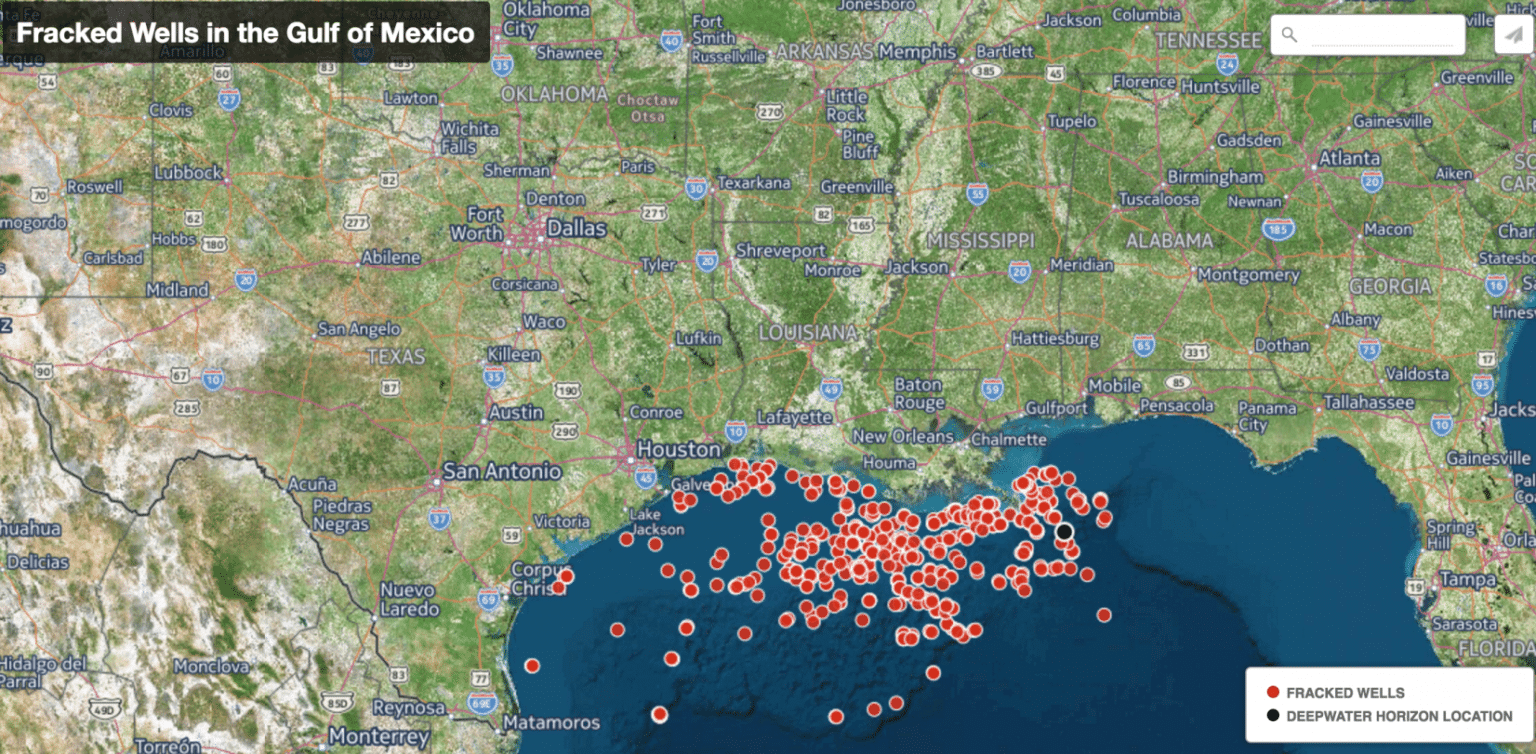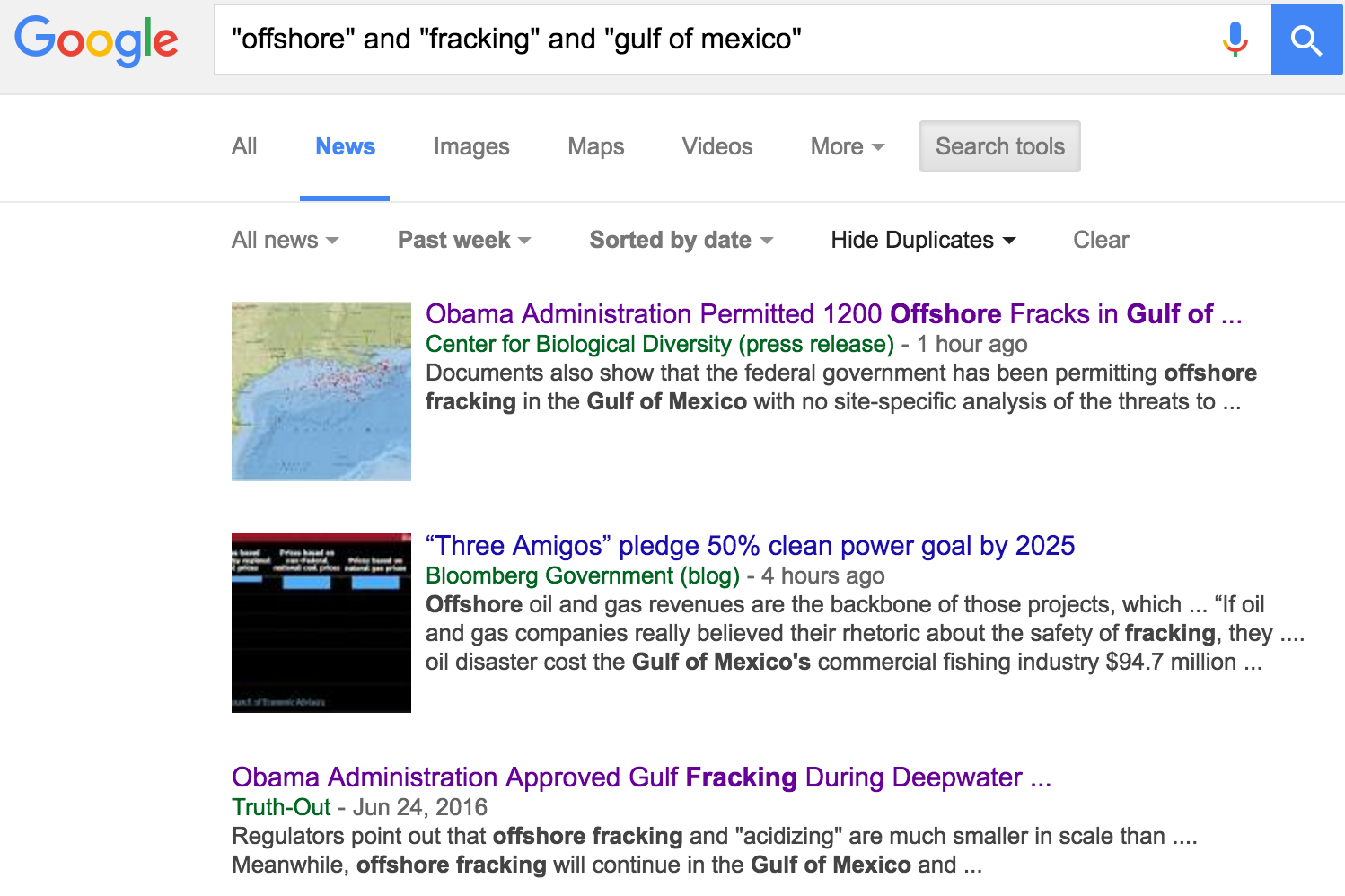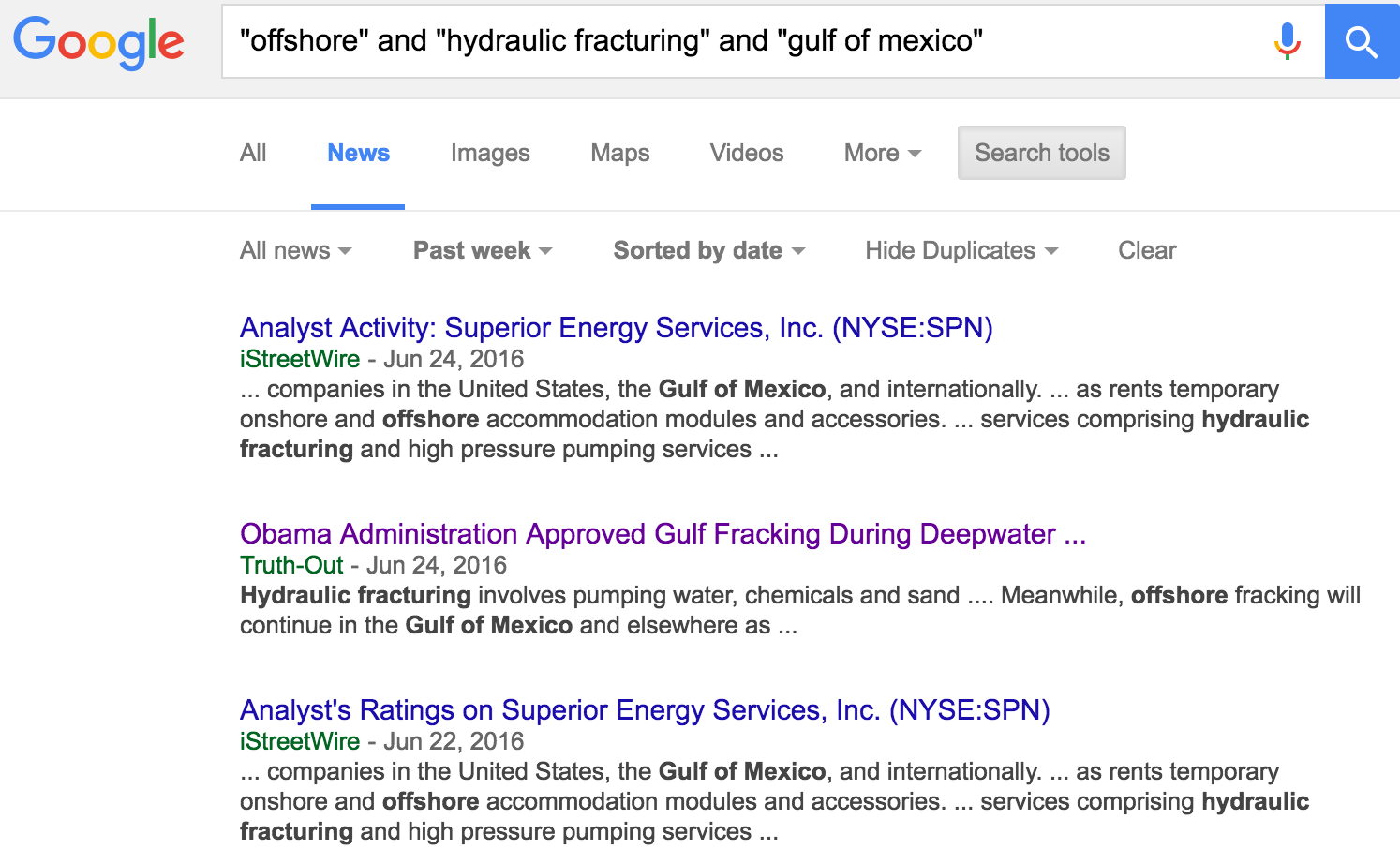On June 24, the independent news website TruthOut broke a doozy of a story: the Obama Administration has secretly approved over 1,500 instances of offshore hydraulic fracturing (“fracking”) in the Gulf of Mexico, including during the Deepwater Horizon offshore spill disaster.
Albeit released on a Friday, a day where many mainstream media reporters head out of the office early and venture to late-afternoon and early-evening Happy Hour specials at the bars, the TruthOut story has received deafening silence by the corporate-owned media apparatus.
Google News, Factiva and LexisNexis searches reveal that not a single mainstream media outlet has covered the story.
Image Credit: Google News
TruthOut got its hands on the story via documents provided by the Center for Biological Diversity (CBD). CBD explained in press release that they “obtained the information following an agreement that settled a lawsuit challenging the federal Bureau of Ocean Energy Management’s and Bureau of Safety and Environmental Enforcement’s failure to disclose documents regarding the scope of offshore fracking in the Gulf under the Freedom of Information Act.”
CBD also has published a list of all of the instances of offshore fracking in the Gulf of Mexico provided to it by BOEM, both in list-form and in visual map form.
CBD says more documents are on the way too, which means the number of frack jobs that have occurred offshore in the Gulf could rise. A case in point: a well that recently leaked and spilled 90,000 gallons of oil into the Gulf was, as reported by CBS affiliate WWL, fracked by spill culprit Shell Oil.
“Proprietary Information”
U.S. Bureau of Safety and Environmental Enforcement (BSEE) officials did not provide comment to TruthOut. But BSEE officials did tell WWL that the chemicals, undisclosed because the list may contain “proprietary information,” would be dumped into the Gulf of Mexico regardless — a jaw-dropping revelation itself.
“This explanation by BSEE presents a whole other set of environmental issues that the public should be outraged about when it comes to fracking in the Gulf of Mexico,” Jonathan Henderson, who runs Vanishing Earth, told WWL. “One of those being that after those fracking chemicals were cycled back to Shell’s rig, Shell eventually dumped those chemicals right back overboard into the Gulf. This in spite of no testing having been done to determine the impacts to the marine environment and ultimately human health as a possible consequence of eating Gulf seafood.”
“Troubled Waters”
CBD released a scientific analysis in September 2014, ”Troubled Waters,” which raised troubling questions about the chemicals used in offshore fracking in California. That report concluded fracking in offshore California is a seismic risk, an air quality risk, and that “10 fracking chemicals routinely used offshore in California could kill or harm a broad variety of marine species, including sea otters and fish.”
These findings have moved CBD to conclude that offshore fracking should be banned.
“Offshore fracking is an inherently dangerous activity that simply doesn’t belong in the Gulf of Mexico,” CBD attorney Kristen Monsell said in the group’s press release. “And the federal government certainly has no right to give the oil industry free rein to frack our oceans — or to keep coastal communities in the dark about this toxic industrial activity.”
And speaking of keeping the public in the dark, where was the mainstream media when these facts were brought to light by TruthOut and CBD?
Image Credit: Center for Biological Diversity | Curt Bradley
Subscribe to our newsletter
Stay up to date with DeSmog news and alerts








